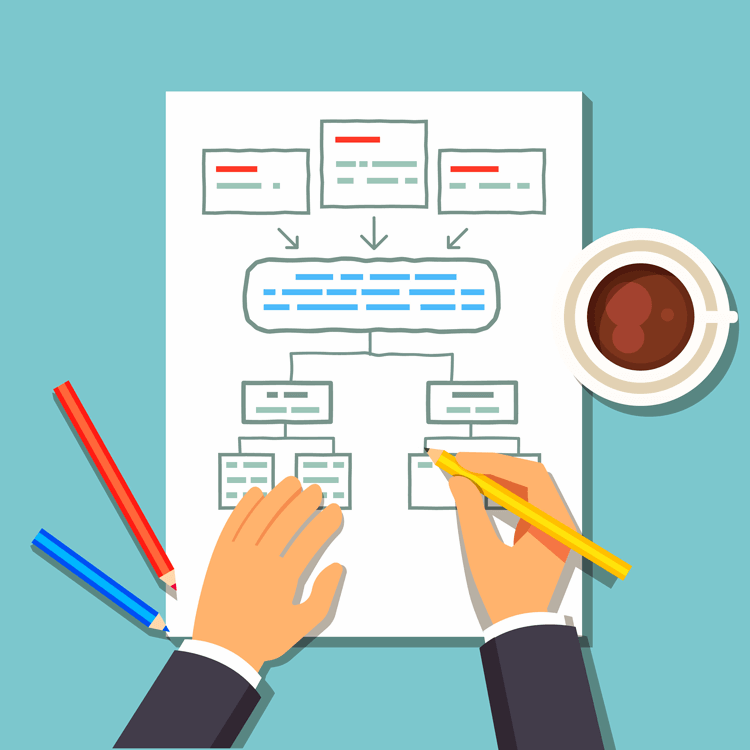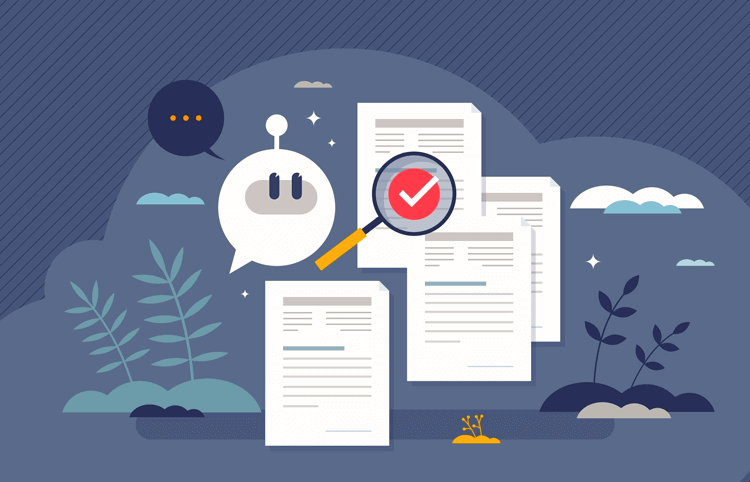"Fit for Use" Service Delivery Fully Explained
In IT service delivery and other customer service initiatives, the principle of "Fit for Use" goes beyond mere functionality. It helps to assure that provided solutions not only meet predefined objectives but also align seamlessly with the needs and expectations of end-users.
In this article, we define "Fit for Use" and its relation to other project and service considerations, give specific examples, discuss implementations and best practices, and look at how future technology might assist planning and strategies.

Understanding Fit for Purpose and Fit for Use
Examining the idea of "Fit for Use" usually starts with comparing it to its close counterpart "Fit for Purpose":
-
Fit for Purpose
"Fit for Purpose" denotes the capacity of a system or service to meet its business, technical, or operational objectives.
Let's use an example of a Service Desk ticketing system. To be "Fit for Purpose", it should include the following:
- Designed to track service requests
- Has well-defined workflows
- Integrates with other systems
- Is secure and is audited
- Has maintenance kept up to date
-
Fit for Use
On the other hand, "Fit for Use" regards the practical effectiveness of the system or service.
Continuing with our Service Desk ticketing system example: To be "Fit for Use", it should include the following:
- Has an intuitive user interface
- Navigates easily for Agents or customers
- Facilitates seamless interactions with customers
- Is continuously updated based on customer feedback and changing business needs
- Has high availability and performance
Both are important, and so is it necessary both are considered during design and implementation planning stages.
ITIL Enhancement: Utility vs. Warranty
The IT Infrastructure Library (ITIL®) expands Fit for Purpose and Fit for Use to a higher level of service management. ITIL brings in Utility to Purpose, and Warranty to Use
-
Utility
"Utility" shows the inherent value that a service or product holds for the end-user. It signifies the extent to which the solution fulfills customer needs. It also aligns with the overall business objectives. Utility defines the fundamental purpose and value proposition.
-
Warranty
In contrast, "Warranty" acts as the assurance that a product or service will not only meet but exceed the agreed-upon requirements. In ITIL, warranty is the commitment to specified operational conditions. This commitment spans the entire lifecycle of a service, emphasizing reliability, availability, and performance. Essentially, warranty is the guarantee that the product or service will be available when the end-user needs it.
Utility and Warranty in Fit for Use
A solution can be functionally robust, fulfilling its intended purpose, yet fall short of delivering the assurance of consistent performance and availability. Conversely, a service with perfect warranty commitments may lack the utility required to meet end-user needs. When utility and warranty meet, solutions are not only effective but also reliable and aligned with user expectations, and so more "Fit for Use."
The Necessity of Early Assessment in Fit for Use
There can exist an ironic trap in the planning of services that can be very costly. A team might be tempted to think the true measure of success can only be gauged once a project is complete. And so, evaluations of stakeholder expectations might be delayed. This can lead to an unclear understanding of how services will actually be fit for use. It can also jeopardize resources and timelines.
Let's use a simple example: A large-scale construction project overlooked early assessments until the final stages. Despite detailed planning and meeting timeline, the team encountered unforeseen challenges related to material shortages and inclement weather. Had early assessments been made, potential roadblocks could have been identified and contingency plans added. Instead, the project faced increased costs and strained stakeholder relationships.
In comparison, let's look at an early-assessment example: In Agile software development, early and continuous assessments are built in. Agile teams conduct frequent reviews and iterations, ensuring that an evolving product aligns with user needs and business objectives. This approach minimizes the likelihood of late-stage surprises and increases adaptability, ensuring the results are better "Fit for Use."
Examples of Good Fit-for-Use Implementation
Let's review some examples where Fit for Use is presented properly:
-
ERP Deployment
Consider a large enterprise deployed an Enterprise Resource Planning (ERP) system. The purpose is to enhance operational efficiency and streamline processes. However, in planning review, while the system is technically sound and aligned with predefined objectives, it lacks the intuitive interface required for end-users. Early assessments reveal this discrepancy, prompting the project team to collaborate with end-users in redesigning the user interface. The result is that the system is indeed "Fit for Purpose" but also "Fit for Use."
-
E-commerce Platform Overhaul
An organization decides to overhaul its online platform to meet evolving customer demands. Late-stage assessments identify issues with website responsiveness and user experience. Adjustments are then made to enhance the platform's responsiveness across various devices. This helps make the platform functionally robust and also better "Fit for Use" by being more adaptable to how end-users would use it.
These examples show that the ability to adapt solutions based on user feedback, operational conditions, and evolving requirements is critical.
The Final Judges of Success - The User's Role in Fit for Use
Despite strategic planning, the ultimate judges of success are the users. They are, however, often not kept in the foreground. They are the ones who interact with and rely on the solutions provided. Acknowledging their needs, preferences, and challenges helps provide not only technically-working but practical solutions as well.
Capturing the Voice of the Customer (VOC) becomes an important step in ensuring that solutions are genuinely "Fit for Use." The customer is not merely a recipient of the outcome but an active participant. Their insights shape the service. Soliciting and incorporating the VOC allows teams to align solutions with both business objectives and user expectations.
Further, the success of a solution extends beyond its technical capabilities. It also hinges on the users' ability to leverage and embrace it. Proper training and communication then become necessary to help users understand the systems, keeping them from being frustrated, which can ultimately lead to the system not being used.
Here are some examples:
-
Healthcare Information System (HIS) Implementation
Consider an HIS implementation in a hospital. The project team works hard to meet regulatory requirements while achieving operational efficiencies. However, during early user interactions, nurses and physicians express concerns about the workflow disruptions caused by the new system. By incorporating this user feedback, the team modifies the system's interface and introduces additional training modules. This helps integrate more seamlessly the new system into the healthcare professionals' daily routines.
-
VOC in Software Development
In a software development project, adopting a user-centric approach involves conducting focus groups, surveys, and usability testing to gather the VOC. By doing so, the project team gains valuable insights into user preferences, pain points, and expectations. This iterative feedback loop helps the software be acceptable to end users, and they can ultimately have a sense of ownership as well.
-
New Enterprise-wide Collaboration Tool Rollout
In the rollout of a new enterprise-wide collaboration tool, end users might bring resistance due to their unfamiliarity with the tool. Recognizing this, the project team can incorporate comprehensive training sessions, user guides, and regular communication updates. This approach eases the transition and can also bring greater user adoption.
Common Challenges in Achieving Fit for Use
The following are some common challenges teams face in achieving Fit for Use, along with best-practice solutions:
-
Lack of User Involvement
As noted previously, excluding end-users from the planning process can lead to solutions that fail to align with their practical needs and preferences.
Solution: Actively involve end-users from project initiation through to completion.
-
Insufficient Requirements Gathering
Incomplete or inaccurate requirements can result in solutions that do not fully meet user expectations or operational conditions.
Solution: Invest in comprehensive requirements gathering, employing techniques like workshops, interviews, and surveys.
-
Overlooking Usability Testing
Neglecting usability testing can lead to solutions that prove cumbersome or confusing for end-users.
Solution: Prioritize usability testing throughout the development lifecycle.
-
Inadequate Communication and Training
Also as noted previously, failing to communicate changes effectively and providing sufficient training can result in user resistance and hinder solution adoption.
Solution: Implement robust communication strategies and comprehensive training programs.
-
Overemphasis on Technical Metrics
Relying solely on technical metrics, such as code quality and system performance, without considering user-centric factors can result in solutions that lack true Fit for Use.
Solution: Adopt a balanced approach, incorporating both technical metrics and user experience assessments to gauge overall solution effectiveness.
Future Trends and Emerging Technologies
The following are some future trends in shaping solutions that not only meet but exceed "Fit for Use" expectations:
-
Artificial Intelligence (AI) and Machine Learning (ML)
AI-driven analytics and predictive modeling can enhance the understanding of user behavior. This can enable organizations to proactively design solutions that align with evolving user preferences. Further, it can anticipate user needs, predict potential issues, and iteratively enhance solutions based on real-time data.
-
User Experience (UX) Design
As technology becomes more integrated into daily life, UX design will focus on creating seamless, intuitive, and personalized experiences that appeal to diverse user demographics. Future UX design trends will emphasize inclusivity, accessibility, and adaptability.
-
Quantum Computing Advancements
Quantum computing's extraordinary processing power can expedite testing and validation processes. This can lead to more comprehensive assessments. It can significantly reduce the time and resources required for "Fit for Use" assessments.
The Bottom Line in Any Fit for Use Endeavors
"Fit for Use" goes beyond technical specifications, emphasizing continuous improvement, adaptability, and end-user needs. Diverse perspectives are considered, communication is transparent, and a shared ownership is involved.
"Fit for Use" involves strategies that consider principles, practices, and stakeholder engagement. It combines best practices for both "Fit for Purpose" and "Fit for Use" concepts. With proper planning, the use of technology, and user focus, these are best implemented in an proactive and anticipatory way.
Organizations embracing these principles and practices position themselves to be much more successful in their service delivery endeavors.





